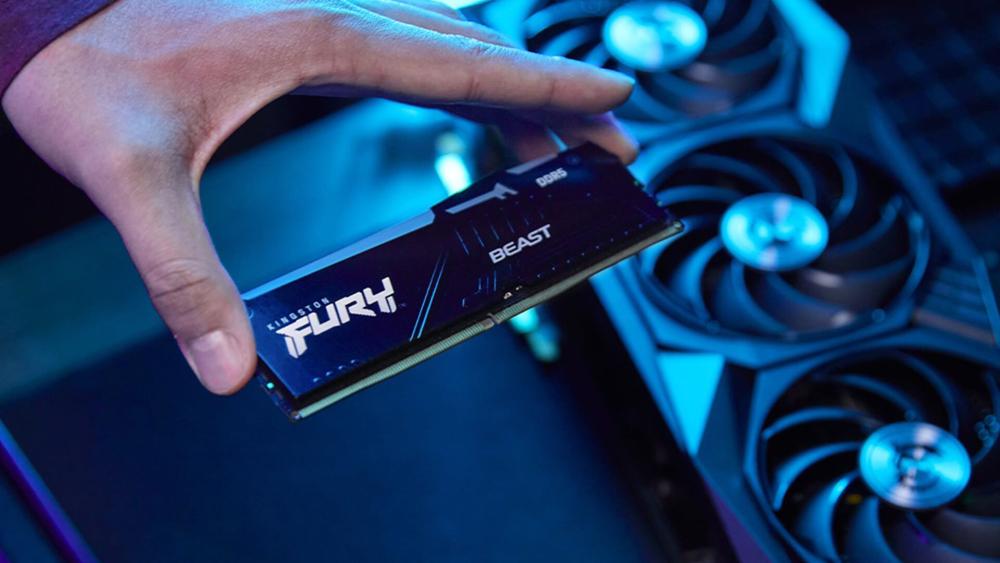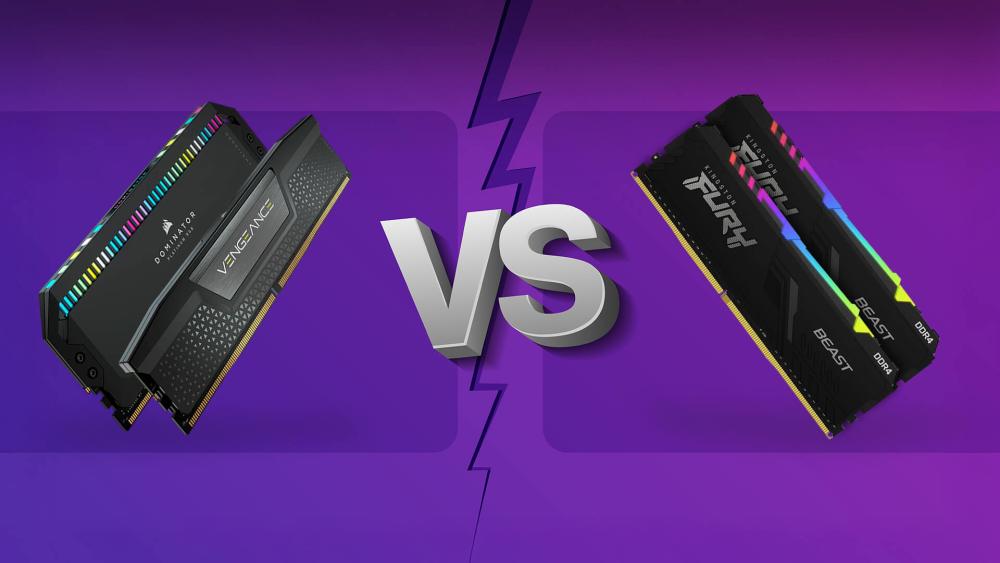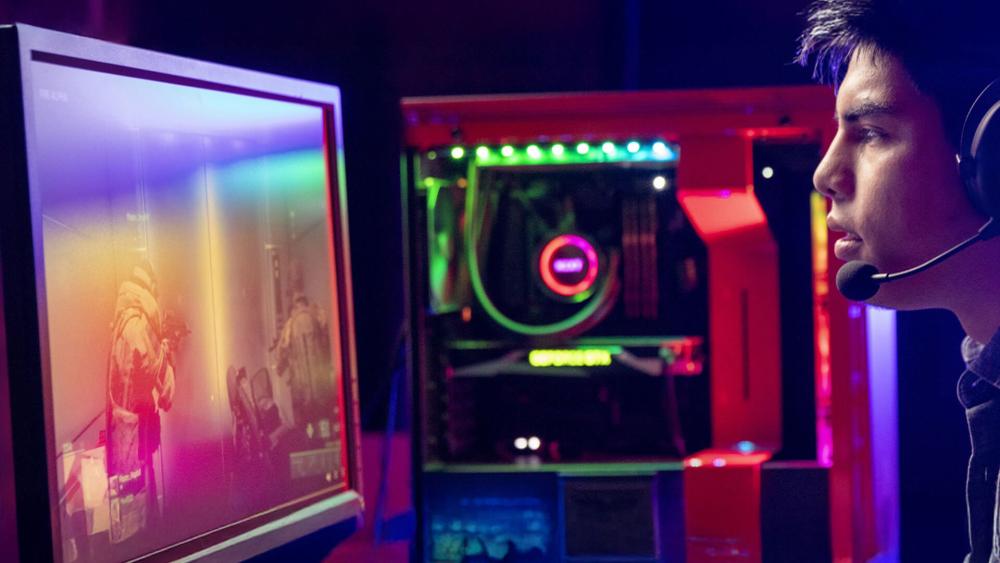POSTED: 31 October, 2025
RAM Speed: Does It Matter for Gaming?
Gaming enthusiasts often ask: Does RAM speed matter for gaming? Many focus on simply getting “more RAM,” but the truth is more complex. While capacity (gigabytes) is absolutely essential, the speed (MHz) and latency of your memory also influence performance, especially in certain gaming setups.
Yes, RAM speed matters for gaming, but its impact varies by game, system configuration, and resolution. Faster RAM can increase frame rates and improve frame pacing, particularly in CPU-bound scenarios. However, the performance gains are often minimal (typically below 5%), and a balance between RAM capacity, speed, and price is crucial.
In this article, we’ll clarify the difference between RAM capacity vs RAM speed (and latency), then dive into how RAM speed affects gaming across various scenarios, CPUs, budgets, and game types.
So, let’s get into it!
RAM Basics: Speed, Capacity, and Timings

Before diving into benchmarks and FPS numbers, it’s important to understand the basic components that make up your RAM’s performance.
Let’s break it down in simple, gamer-friendly terms for you.
RAM Speed (MHz / MT/s) & Why Does it Matters?
This is how many cycles per second your RAM can perform. For example, a 3200 MHz module does ~3.2 billion cycles per second. Higher speed often means higher bandwidth (how much data can be transferred per second) but it doesn’t tell the whole story.
Latency (CAS, CL)
Latency is the delay between when the memory controller requests data and when the data arrives. It’s often expressed as CL16, CL18, etc. Lower CL is preferable. However, it must be viewed in context of the clock speed: a CL16 at 3200 MHz may have similar real‑latency (in nanoseconds) to CL18 at 3600 MHz.
Why? Because even though 3600MHz RAM has higher latency in cycles, each of those cycles is shorter in duration due to the higher frequency.
So, low latency RAM can be great, especially for competitive gamers; but it should always be considered alongside clock speed.
Dual‑Channel vs Single‑Channel: Does It Boost Gaming Performance?
If you’ve ever wondered, “Does dual-channel RAM boost gaming performance?” The answer is yes, and sometimes significantly.
Memory channels refer to how many data paths are open between RAM and memory controller. Dual‑channel (two sticks in the correct slots) effectively doubles the bandwidth compared to single‑channel.
Dual-channel mode doubles the memory bandwidth, which allows your system to access more data at once; this can lead to smoother gameplay, faster asset loading, and improved minimum (1% low) frame rates in memory-intensive games.
Many gamers make the mistake of installing a single 16GB stick instead of two 8GB sticks. While both configurations give you 16GB total, the dual-stick setup in dual-channel mode is vastly superior for gaming performance.
RAM Capacity vs Speed: Which One Should You Prioritise?
If you’re building a gaming PC or upgrading your current rig, you’ve probably asked:
"Should I prioritise RAM speed or size for gaming?"
If you’re running less than 16GB of RAM, upgrade capacity first. Most modern titles require at least 16GB for smooth performance.
Once you have enough capacity (16GB–32GB), that’s when RAM speed and latency start to matter more, especially if you’re gaming at lower resolutions or using a high refresh rate monitor where CPU and memory bottlenecks are more common.
How Faster RAM Can (and Can’t) Level Up Your Gameplay
RAM speed is often hyped as a secret weapon for squeezing extra FPS out of your rig. But how much does it really move the needle? Let’s cut through the myths and dig into what faster RAM actually delivers in real-world gaming.
Faster RAM = Faster Gameplay? The Truth About FPS Gains
Yes, RAM speed can improve gaming performance, but let’s set realistic expectations.
In CPU-bound games or multitasking scenarios, faster memory can unlock smoother gameplay, especially when you're aiming for high frame rates on a powerful GPU. Titles like Valorant, CS:GO, or Starfield have shown up to 10–12% performance improvements when upgrading from 3200MHz to 6000MHz in some test setups.
But here’s the caveat: if your graphics card is already maxed out, the gains from upgrading RAM speed alone may be minimal, often below 5% in frame rate.
Still, even when average FPS sees a small bump, you’ll notice faster RAM contributing to better 1% lows; those annoying micro-stutters are reduced, delivering a smoother, more consistent experience.
DDR4 vs DDR5: Should You Make the Leap?

When comparing DDR4 vs DDR5, think of it as choosing between a dependable workhorse and a flashy new sports car:
- DDR4 (e.g., 3200–3600MHz) is widely available, more affordable, and surprisingly capable even in today’s demanding games.
- DDR5 (e.g., 4800–6000MHz+) boasts higher bandwidth and better multitasking efficiency, especially in newer platforms.
But here’s the kicker: real-world tests show that DDR5 doesn’t always crush DDR4 in raw gaming performance, at least not yet. In fact, many current games see only marginal gains with DDR5 unless you’re also running a powerful CPU that can take full advantage of that extra speed.
If you’re building a fresh system and want to future-proof it for the next few years? Go DDR5. But upgrading from a good DDR4 setup just for the sake of speed? Probably not worth it; save your money for a better GPU instead.
When RAM Speed Really Shines: CPU-Limited Scenarios
Faster RAM shines brightest in games where your CPU is the bottleneck typically when you're gaming at 1080p with a high refresh rate monitor, and your GPU still has headroom.
In these setups, every millisecond saved in memory access translates to better responsiveness and smoother motion. That’s why competitive titles and esports players obsess over memory speeds and timings.
But if you’re gaming at 1440p or 4K, the bottleneck usually shifts to your GPU. In that case, upgrading RAM speed might offer negligible gains; so don’t expect miracles.
RAM Speed Impact Across Different Gaming Scenarios
| Gaming Scenario | Impact of Faster RAM | Recommended Focus |
| Competitive Esports (CS:GO, Valorant) | Improves responsiveness, reduces input lag, boosts 1% lows and frame pacing | Prioritise speed + low latency (e.g. 3600–6000MHz) |
| AAA Open-World Games (Cyberpunk 2077, Elden Ring) | Slight FPS uplift (2–5 FPS), faster asset streaming, fewer micro-stutters | Go for balanced speed & capacity (e.g. 32GB @ 3600MHz) |
| Modded / Emulated / Sandbox Games | Benefits from both speed and capacity due to heavier CPU/RAM load | Invest in high capacity first, then speed |
| Streaming While Gaming | Smoother multitasking, fewer slowdowns, better background task management | Opt for 32GB RAM, moderate speed (e.g. 3200–4800MHz) |
RAM Speed vs Capacity: What’s More Important for Gaming in 2025?

If you’ve ever found yourself comparing 16GB of 3600MHz RAM with 32GB of 3000MHz, you’re not alone. It’s one of the most common dilemmas gamers face when upgrading or building a new rig; should you go for more memory or faster memory?
Let’s break it down based on real-world benefits and current gaming demands.
Capacity First: Why 16GB Is No Longer the Sweet Spot
In 2025, 16GB of RAM is the bare minimum for smooth gaming. It’s enough for most titles at 1080p or even 1440p, but if you stream, mod, multitask, or simply like to keep Chrome open with 20 tabs; you’ll benefit more from having 32GB of RAM.
Even if that 32GB kit runs slightly slower (say, 3000MHz), the extra memory headroom will make your system feel smoother and more responsive especially in newer AAA titles that eat RAM for breakfast.
| Tip: For multitaskers and heavy gamers, it’s better to choose 32GB of slightly slower RAM over a blazing-fast 16GB kit. Insufficient RAM can cause stutters, long loading times, or even system hiccups during intense gameplay. |
When Speed Wins: Scenarios Where Faster RAM Delivers More
That said, RAM speed does matter but it matters more in specific use-cases. Here's where faster memory (like DDR4-3600 or DDR5-5600+) actually shines:
- Esports and Competitive Games: Every millisecond counts. High-speed RAM improves input responsiveness and tightens frame pacing.
- CPU-Bound Gaming: If your graphics card is powerful but your CPU is doing most of the heavy lifting (e.g., at 1080p), faster RAM helps reduce bottlenecks.
- Streaming While Gaming: High-speed memory improves real-time encoding, background task handling, and general responsiveness.
If these sound like your typical sessions, prioritising RAM speed after ensuring you have at least 16GB could give you a noticeable edge.
Future-Proofing: What’s Best for Upcoming Games?
As we move deeper into 2025 and beyond, games are becoming more resource-intensive. Expect:
- Larger, more detailed open worlds
- Heavier multitasking requirements
- More concurrent processes (e.g., AI systems, ray tracing, streaming, background tasks)
That means both speed and capacity will matter more than ever. If you’re building a new PC, aim for 32GB of high-speed RAM (e.g., DDR5 at 5600MHz or higher) for maximum longevity and flexibility.
Just don’t forget to check CPU and motherboard compatibility; there’s no point investing in ultra-fast memory your system can’t fully utilise.
CPU and RAM Synergy: Why Your Processor Matters
Not all CPUs respond the same way to faster RAM especially when comparing AMD vs Intel platforms. AMD processors, particularly those on the AM4 and AM5 sockets, tend to benefit more from high-speed memory. That’s because features like Infinity Fabric which connects the CPU cores and memory are tied to RAM frequency. Simply put, the faster your RAM, the better your AMD chip can communicate internally, leading to real performance gains in games.
Intel CPUs, on the other hand, are generally less dependent on memory speed. While they still benefit from faster RAM, the uplift is usually smaller and more incremental, especially in mainstream gaming tasks.
Thankfully, both platforms support memory overclocking using built-in profiles. XMP (Extreme Memory Profile) for Intel and EXPO (Extended Profiles for Overclocking) for AMD let you easily enable higher speeds in the BIOS without manual tweaking. Just make sure your motherboard supports the rated frequency and you’re good to go.
In short, if you're building around an AMD CPU, investing in faster RAM pays off more noticeably. For Intel, balanced kits with decent speeds (e.g., 3200–3600MHz) are often sufficient for most gaming scenarios.
Is Faster RAM Worth the Price? A UK Gamer’s Perspective
When considering faster RAM for gaming in the UK, it’s essential to weigh the performance benefits against your budget. High-speed RAM kits, particularly DDR5, do offer advantages, but the gains in gaming are often modest, typically under 5% unless you’re running a high-end CPU in CPU-bound scenarios.
For gamers on a budget, 16GB DDR4 at 3200MHz, priced around £40–£60, delivers excellent value and smooth performance in most modern titles. Stepping up to DDR4-3600 or entry-level DDR5-4800 (16–32GB) in the £80–£120 range offers a good middle ground for future-proofing. For high-end systems, especially those built around Ryzen 7000 or Intel 13th/14th Gen CPUs, DDR5-5600+ (32GB or more) typically priced above £130 can unlock additional responsiveness, especially in multitasking and competitive gaming.
However, if you’re upgrading an older system, sticking with a well-optimised DDR4 setup is often more cost-effective unless you're planning a full platform switch.
Final Verdict: Worth It or Not?
Yes, RAM speed matters for gaming, but its impact varies dramatically depending on your game type, resolution, and overall build. Faster RAM such as high-performance kits from Corsair memory can absolutely increase frame rates and smooth out gameplay, especially in CPU-bound titles.
However, the performance gains are often modest, and chasing ultra-fast speeds like 6400MHz isn’t always cost-effective. It’s about balance between capacity, speed, and your actual use case.
If you're a competitive gamer, high RAM speed can give you that edge. If you’re building a balanced PC, prioritise capacity first (at least 16–32GB), then optimise for speed within your budget.
Frequently Asked Questions
Does 3200 MHz vs 3600 MHz RAM make a difference in gaming?
Yes, but the difference is often modest (~2‑5 FPS in many games) unless your system is CPU‑limited and running at lower resolutions.
How much RAM speed is enough for gaming in 2025?
For most gamers: DDR4 at 3200–3600 MHz or DDR5 at 4800–5600 MHz offers excellent value. Higher speeds help niche use‑cases.
Is DDR5 better than DDR4 for gaming?
DDR5 has advantages (higher bandwidth, future‑proofing) but DDR4 remains more cost‑effective and in many cases performs very similarly in games today.
Does RAM speed affect loading times?
Yes, faster RAM can reduce load times and improve responsiveness in open‑world and memory‑heavy games, though SSD/drive speeds still dominate most load times.
Can slow RAM bottleneck a GPU?
In extreme cases, yes, especially at lower resolutions when the CPU is doing more of the work. But in many setups the GPU remains the primary bottleneck, so a slow RAM alone rarely cripples performance.